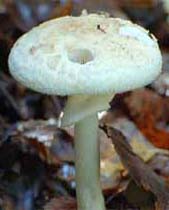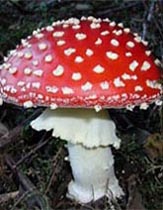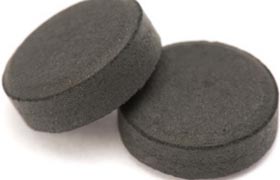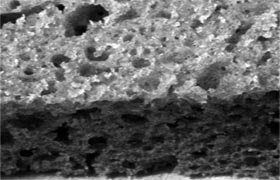


Poisons. Since ancient times mankind has been known that in nature there are substances that are good for the body and substances that can poison the body. Harmful substances called poisons. Despite its dangers, poisons are used very widely, for example for hunting: arrowheads smeared with poisonous composition, that helped to quickly deal with the wounded beast. Poisons used among the inhabitants of palaces, kingdoms.
In that times, developed a science that studied poisons, their influence on man and also antidote. Of course, in the early stages of the development of science - toxicology, could answer the question, "what is the best poison", but had almost no answers how to neutralize the negative effect of poison. Among the wealthy people of the past time, there were those who kept slaves, tried eating food before themselves, if no one is poisoned, ate and drank themselves.
In the 16th century in Western Europe (Rome) acted production to manufact of poisons. At that time white oxide of arsenic As2O3 was the most common and undetectable poison. This has been poisoned tens of thousands of people, no one at that time could not understand what had happened to a person because it chemical substance could not be identified in the body.
Only in early 19th century a method was found of identification of oxide of arsenic As2O3 in the body. Since then, considered the "king" of all poisons the oxide of arsenic As2O3 gradually lost relevance. The main issue of toxicology at that time was the presence of a chemical that was not detected by known methods; but other hand was searching the possible methods of recognition of various poisons in the body.
The gradual development of science toxicology allowed to determine if a long time take small doses of any poison, there is a gradual addictive and produces "resistance" to this poison, the tolerance.
There have Been cases when taken in small doses, consisting of several poisons, and body was a habit and was resistant to the adverse effects of these poisons. Even in history there are facts about the failed attempts of poisoning, for example, the ruling monarchs.
But more interesting than the self-development of immunity to the effects of various poisons, was and is now production, such chemicals that would neutralize the action of the poison, the manufacture of antidote (from Greek "opposite to").
Of course, universal methods of neutralizing poisons or antidotes were existed. These included salt, soap, acetic acid, gall stone ruminants and many others. But of course, the chemicalse have not so good effect, they helped, mostly small. This is due to the fact that to every poison must be own antidote, that could effectively deal with the poison in the body.
Further development of chemical science has allowed to deep the knowledge about chemical transformations, so and on action and reaction to poisons. In early stages of development of the action of poisons also was trying to neutralize the poisons with precipitation of chemical reactions, that we use to determine - chemical reaction is proceeds or not proceeds . Widely used, substances that absorb other substances, such as the familiar activated charcoal. Later it was found that not all cases can be explained as action of antidote
From a biological point - the poisons are substances that block the functioning of the our receptors, i.e. blocks the connection of the our body with the outside world. Even now, the impact of certain poisons on the body is not fully studied. The importent role in the interaction of poison and our body designated to dose poison, that is, the amount of poison that entered the body. The question of the amount of poison is one of the most important, which examines the toxicology.
Characteristic of toxicity
Dose - is a very important factor affecting the action of poison on the body. Even at low doses of poison in the body there are processes aimed at the elimination of the poison, but we may not know about that! The dose then the body begins to react to the poison - called minimal reacting dose. If the dose is lethal (fatal) then needs a doctor! The smaller the difference between toxic dose and the minimal reacting dose, the stronger the poison.
There are characteristic of toxicity, that quite accurately determine the strength of the action of the poison. One of them is the median lethal dose LD50. This characteristic of toxicity means that the poison kill 50% of test animals. Therefore, there is another criterion of division of all chemical substances, it is toxicity classes. So, chemical substances are classified into vety high toxic (class 1), highly toxic (class 2), toxic (class 3) and small toxic (class 4). As for the representatives of each class, see examples like: the familiar potassium cyanide (KCN) - relates to class 1 (very high toxic substance). Median lethal dose of the chemical (LD50= 10 mg/kg). Another chemical - mercuric chloride (a substance of mercury and chlorine HgCl2) - a substance of the 2nd class of toxicity (LD50= 37 mg/kg). We know that arsenic substance are poisonous, and so, oxide of arsenic As2O3 - also applies to the 2nd class of toxicity (LD50= 20 mg/kg). Organic substance diethylamine ((C2H5)2NH - refers to the 3rd class of toxicity (LD50= 940 mg/kg). There are substances that we eat every day, substance applies to the 4th class of toxicity. It is the sodium chloride (NaCl) - table salt!
Activated charcoal
What is activated charcoal?! Any way, it is chemically active carbon, carbon that has a specific porous structure. Probably not many people know that it is not just coal or carbon. It is a mixture of various substances: this includes wood, nut shells, and, of course, fossil and charcoal. All this mixture is roasted off at a temperature of about 500...900 0C in the water vapor environment, different metals and carbon monoxide CO.


Action of poison
Action of poison can be narrow and wide range. Under a wide range needs to understand the direction of the poison to all biological tissues, cells and molecules, at which are their destruction. Effects of poison on it tissue can be compared, for example, as strong acids or halogens.
Action of poison of narrow range aimed at the destruction of not all biological tissues, but only certain structures. Such poisons may include, for example, toxins (substance, that has a protein structure, secreted by microorganisms), cyanides.
It should be noted that the poisons of narrow range are more toxic than the poisons of wide range. It can be explained by a small number of receptors in our body that are responsible for reaction to the impact.
Poisons are classified according to toxicity following types:
- LD50 mg/kg:
- very high toxic - less then15
- high toxic 16...150
- toxic 151...1500
- Low-toxic - more 1500
| Poisonous substance | LD50mg/kg |
| 2,3,7,8-Tetrachlordibenzodioxin | 0,022 |
| Parathion (E605, tiofos) | 3,6 |
| Potassium cyanide (KCN) | 10 |
| Ricin (castor seeds (castor oil) | 0,0001 |
| Nicotine (tobacco leaf) | 0,3 |
| Strychnine (emetic nuts) | 0,75 |
| Tubokurarin (rhododendron felt) | 33 |
| Atropine (deadly nightshade, henbane, Datura) | 400 |
| Rutuliniai toxin (bacteria) | 0,0000003 |
| tetanus Toxin (bacteria) | 0,000001 |
| b-Bungarotoxin (South Asia snake bungarus) | 0,00019 |
| Batrachotoxin (tree frogs) | 0,002 |
| Tetrodotoxin (puffer fish, some frogs) | 0,01 |
| Muscarine (Amanita) | 0,23 |